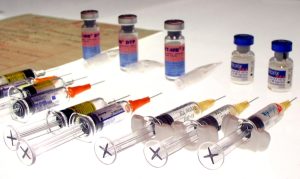Over the last two years, there has been a significant change to the pharmaceutical benefits landscape due to an increase in specialty drugs entering the market. Although they impact approximately only 2% of claimants, the number of specialty drugs is growing and they contribute significantly to the share of total drug cost under an employee benefit plan. One of the more recent specialty drugs – PCSK9 inhibitors (a new cholesterol drug), is expected to make a sizeable impact on a plan’s drug costs.
Recently, Sun Life prepared an article to help clients understand the new cholesterol therapy, its potential impact on drug plan costs, and how the Enhanced Prior Authorization program can be a solution to manage these costs. (Emerging Costs; New cholesterol therapies. Is your drug plan ready?)
Currently, the most commonly prescribed and effective cholesterol medications are known as “statins”, these medications are relatively inexpensive (approximately $400 per year per person) due to the fact that there are several generic versions available driving the costs of the medications in this category down. In comparison, for the new PCSK9 inhibitors, the annual drug cost per year per person is estimated at $10,000.
Unlike other specialty drugs that have high annual treatment costs and are claimed by a limited number of individuals, the PCSK9 class of drugs may be indicated for uses that encompass a large patient population (TELUS estimates that potential sales could reach a range between $250 million, growing to $2.5 billion by 2026). This is where the Enhanced Prior Authorization program can bring value – it only allows patients that cannot be treated through other established, more affordable drugs to be approved for use of the new medication. The program provides for good governance over a drug plan: the right drug, for the right plan member at the right time.
Unlike other specialty drugs that have high annual treatment costs and are claimed by a limited number of individuals, the PCSK9 class of drugs may be indicated for uses that encompass a large patient population. This is where the Enhanced Prior Authorization program can bring value—it aims to ensure that not all members who need cholesterol treatment will be treated with these new expensive therapies, if they can be managed well on other therapies that are established, effective and more affordable.
The Enhanced Prior Authorization program requires that certain types of drugs be pre-approved before coverage, based on recognized medical criteria. This makes sense because not all drugs should be used for everyone as first line treatments. Some drugs that are either more expensive, or intended as second line treatments, need to be evaluated on a case-by-case basis. With the escalation of prescribing medications for “off label” use, Enhanced Prior Authorization also helps to ensure that these medications are being used for Health Canada-approved indications.
This is good governance for an employer’s drug plan: the right drug, for the right plan member at the right time. Furthermore, this due diligence on high cost drugs could also be a valuable fraud prevention initiative.
Since Enhanced Prior Authorization requires certain drugs to be approved before use, to be eligible for reimbursement, it helps to ensure that PCSK9 inhibitors will be used only when necessary, (e.g., for those who have familial hypercholesterolemia). By limiting the use of these drugs to those who really need them and can’t take other highly effective, proven and more affordable alternatives, Enhanced Prior Authorization helps to keep drug plan costs down.

